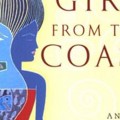This is a review of the English version of Pramoedya’s Gadis Pantai, translated by Willem Samuels, published by Hyperion. The review is currently only available in English.

Pramoedya Ananta Toer does a few fascinating things in his 2002 novel, “The Girl From the Coast.” He uses rural colonial Java as the backdrop for his story about an ordinary girl from a poor fishing village who might have inherited the unremarkable life of a fisherman’s wife had fate not intervened. Instead, Toer draws her to the city and casts her into the bizarre world of Javanese nobility. Toer uses efficient narrative and the English translation features simple language. The book’s strength lies in its characters who wrestle with big questions about society and their places within it. Perhaps not Toer’s most powerful work, “The Girl from the Coast” still sketches a telling, and charming, look at rural Java’s social dynamics on the brink of Indonesian independence and revolution.
The book opens with our protagonist riding into the city. Her father has arranged for her to marry the nobleman known as the Bendoro. Though Toer gives this man a name, the girl, and almost all commoners in the story, are left nameless. The girl struggles to adjust to her new life restricted by etiquette and duty but she learns to cope and even manipulate her circumstances. Of all people, her servant accepts the task of teaching the girl how things work in a noble household and how to look out for herself. The girl and the servant become friends until the servant oversteps her bounds. From there Toer makes clear that relationships forged by any means outside of position relative to class are necessarily impermanent.
Toer makes heroes out of these nameless lower class women by giving them voices and complex personalities. In a place and time where women dare not dream of equal standing, the girl fights to define herself and her future. “The Girl from the Coast” may be described as feminist because Toer’s women and men characters act against traditional patriarchy, urban-rural bias, and class discrimination: an uncommon achievement for this context and wholly relavent today. What really thrilled me was learning the girl was based on a real person – Toer’s grandmother.
Reading this book was a pleasure. And living in rural Indonesia made the experience that much more immersive. However the story has its flaws. I later learned it was meant to be the first in a trilogy and it shows. The story leaves off just as the plot picks up. The six-page epilogue packs nearly as much drama as the previous 274 pages. In its intended form the trilogy would follow the girl, her family, and lead to Toer’s own involvement in the growing nationalist movement in Indonesia. It’s a shame the second and third books were destroyed while Toer was held as a political prisoner.


Leave a Reply